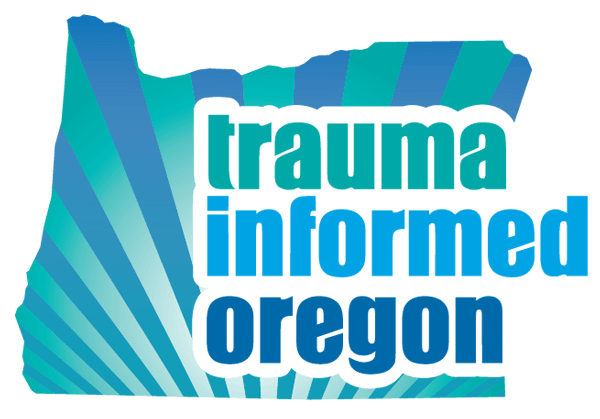Blog
 Oregon Health Authority’s Strategy to Reduce Youth Suicide
Oregon Health Authority’s Strategy to Reduce Youth Suicide

September 27, 2017
From Ann Kirkwood, Youth Suicide Intervention Coordinator, Oregon Health Authority
Youth suicide is a tragedy we can and must prevent. Alarmed by Oregon’s increasing rate of suicide among young people, the Legislature in 2014 recognized the need for a comprehensive strategy to reduce youth suicide.
ORS 418.704 called for development of a Youth Suicide Intervention and Prevention Plan to guide multi-faceted efforts through 2020. The Plan developed by 100 subject matter experts called for creation of the Oregon Alliance to Prevent Suicide to guide the public policy agenda for suicide prevention among children, youth, and young adults.
The Oregon Health Authority (OHA) is collaborating with the new 60-member Alliance to elevate public understanding about suicide and reduce the incidence of youth suicide in Oregon. Plan implementation will use data and measurement strategies to focus, monitor, and coordinate progress in collaboration with the Alliance evaluation committee. Other committees are working on workforce development, continuity across care settings, outreach and awareness, and school interventions.
Summary of Actions
The following is a summary of the actions OHA took in 2016 to meet the goals of the Plan. Many other community programs are in place across the state by volunteers, programs, and agencies committed to reducing youth suicide.
- Data: OHA created an online data dashboard of suicide information by county, providing local partners with information to shape their prevention, intervention, and post-suicide intervention (postvention) programs.
- Training in risk assessments: OHA initiated a legislative concept for training physical and behavioral health providers and school counselors in best practices for suicide risk assessment, management, and treatment. Senate Bill 48 was passed, creating a voluntary program to promote trainings to multiple professionals and gather data from licensing boards on their participation in trainings for suicide risk assessment, management, and treatment.
- Transition support for suicidal youth and families: OHA provided technical assistance to a workgroup led by Representative Alissa Keny-Guyer to develop legislative concepts for providing services and supports to suicidal youth and their families when the youth are released from emergency departments. House Bills 3090 and 3091 sponsored by Representavie Keny-Guyer and promoted by advocates were passed to require hospitals to develop protocols to plan for patients leaving the emergency department to outpatient care (3090) and to initiate public and private payment strategies for those services (3091).
- Best practices for community providers: OHA promulgated rules for psychiatric emergency services and crisis response services by community mental health programs (CMHPs) to include best practices in suicide risk assessment, lethal means counseling, and safety planning.
- Education for families: The Children’s System Advisory Council began developing health literacy materials for families whose children go to emergency departments for suicide crises and are discharged to their homes.
- Understanding impact of trauma: Trauma Informed Oregon began work on materials analyzing impacts of trauma and suicide. The organization is working on updates to its trainings to include trauma and suicide in 2017.
- Training for pediatricians: The Oregon Pediatric Society began expanding its START provider training program to include suicide risk assessment, safety planning, and lethal means counseling in classroom trainings and webinars in 2017–2019.
- Safe online spaces: Through a contract with OHA, Lines for Life, Youth M.O.V.E. Oregon, Reachout.com, a team of youth and other stakeholders began developing a youth-informed strategic plan, due by September 2017, to promote safe online spaces for youth.
- Reporting and information-sharing: Senate Bill 561 (2015), which mandates post-suicide information-sharing and response activities in all Oregon counties, was implemented. Rules were promulgated in 2016. As the program ramped up in 2016, OHA identified communities with disproportionate suicide rates and provided technical assistance, including funding for Sources of Strength and Connect:
- Two pilots of the Sources of Strength peer-led school prevention and resiliency program began in the Albany and North Clackamas school districts with OHA funding. Albany is planning on expanding the best practice program to all middle and high schools this academic year.
- Four pilot sites were identified and funded for the Connect suicide postvention training program: Linn-Benton-Lincoln, Umatilla, Yamhill and Malheur counties. All sites will implement Connect and the University of Oregon will evaluate the pilots’ effectiveness.
- Emergency Department pilots: OHA has contracted with Oregon Health and Science University to study impacts of a multi-site pilot program that offers outpatient clinical care and family support services to youth in a behavioral health crisis and their families at release from an emergency department.
- Raising public awareness: OHA’s county grantees and Coordinated Care Organizations have offered a range of trainings to parents, communities, and physical and behavioral health providers to increase awareness about youth suicide and to build skills in working with at-risk youth.
